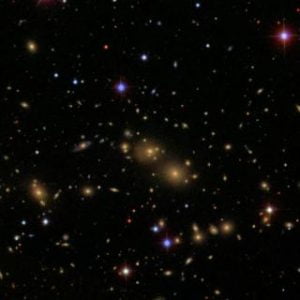
Image: The Abell 1689 galaxy cluster. Credit: NASA
In a letter published in this week’s Astrophysical Journal, ICRAR astronomer Dr Kenji Bekki has discovered a previously unknown process that causes new stars to form in large clusters of galaxies.
Using complex computer simulations, Dr Bekki found that as a cluster of galaxies grows, individual galaxies feel the pressure and start forming new stars in massive bursts.
“This result explains why more star formation is observed in distant clusters of merging galaxies,” says Dr Bekki. “It shows that the environment the galaxy is in influences how it develops.”
Galaxies, like our own Milky Way, are usually in small groups of much less than 100 members. However, some groups merge to form clusters of more than 1,000 galaxies.

Dr Kenji Bekki
As new clusters form, the gas between the galaxies becomes much more dense and the pressure increases dramatically. When galaxies move through the denser gas, a burst of new stars forms within them.
“We’ve known for a long time that changes in the gas between galaxies can influence how fast new stars are born, but one of the key questions was how merging between clusters affects the gas itself,” says Dr Bekki.
“We’ve shown that when clusters merge, an increase in the pressure and density of the gas between galaxies occurs, causing synchronised bursts of star formation in many of the cluster’s galaxies.”
However, we’re unlikely to have our own burst of star formation in the Milky Way. “We’re in too small a group to succumb to peer pressure,” says Dr Bekki.
https://www.youtube.com/watch?v=sX4mzTSx4Xo
Computer simulation of two merging galaxy clusters. The pink particles represent the gas between the galaxies and the blue dots are the galaxies within the clusters. As the clusters merge you can see that the gas between the galaxies becomes much more dense.

